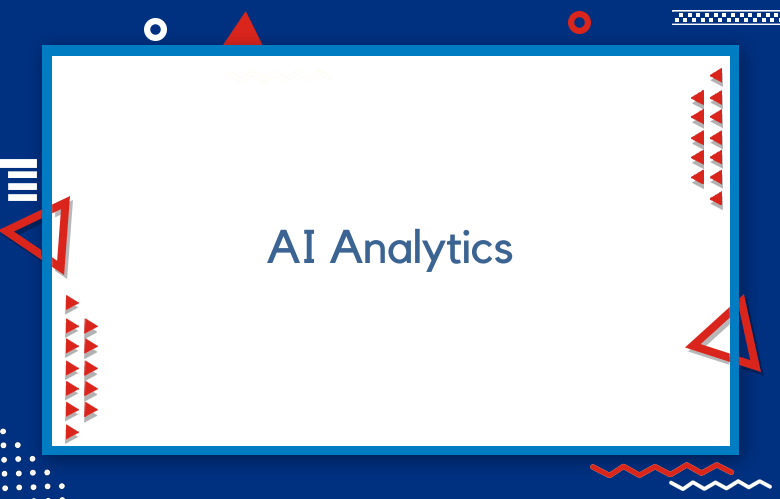Neuro-Symbolic AI for Marketing

Neuro-Symbolic AI (NSAI) is a fusion of two AI paradigms: neural networks (NNs), which are statistical models inspired by the brain’s architecture, and symbolic reasoning, which focuses on logic-based rules and knowledge representations like ontologies or knowledge graphs. This hybrid approach enhances AI’s capabilities in marketing by improving personalization, decision-making, campaign optimization, and influencer marketing with deeper contextual understanding and explainability.
We will delve into the advanced concepts of NSAI, explore how it applies to marketing, and include specific formulas and examples to demonstrate how NSAI can transform marketing strategies.
What is Neuro-Symbolic AI?
Neuro-Symbolic AI (NSAI) integrates neural networks’ pattern recognition strengths with symbolic reasoning’s structured decision-making capabilities. In a marketing context, this leads to more robust, transparent, and data-efficient models that deliver actionable insights.
Formulaic Representation of NSAI
A typical NSAI model can be mathematically described as a combination of neural network layers and symbolic reasoning logic. If we denote the output of a neural network NN(x)NN(x) as a function of input data xx, and symbolic reasoning as SR(y)SR(y) based on a set of logical rules or knowledge graph yy, then the overall system can be expressed as:
NSAI(x,y)=f(NN(x),SR(y))NSAI(x, y) = f(NN(x), SR(y))
Where ff is a combination function that determines how the neural network’s probabilistic output interacts with the symbolic reasoning system’s logical conclusions. This architecture enables marketing strategies to leverage both data patterns and structured knowledge.
Example: NSAI in Campaign Optimization
Consider a marketing campaign for an online store. The store wants to optimize its promotions based on historical data and a set of rules derived from customer behavior (e.g., “Customers aged 25-35 prefer discounts on electronics”). Here, the neural network can analyze purchase data to detect patterns, while symbolic reasoning applies business rules to decide which promotions to offer.
The neural network might predict the likelihood of a user making a purchase with a score of 0.80.8, while symbolic reasoning adds context like “if the customer has shown interest in electronics, apply a 10% discount.” This synergy ensures that the final decision is both data-driven and grounded in practical business rules.
Key Components of Neuro-Symbolic AI in Marketing
Neural Network Layer
Neural networks are essential for detecting patterns in customer data, which can include demographics, purchase history, browsing behavior, and engagement metrics. A simple neural network consists of layers of interconnected nodes, where each node applies a weight ww and bias bb to the input data.
Formula: Neural Network Prediction
The output of a neural network for marketing decisions can be described as:
y^=σ(Wx+b)\hat{y} = \sigma(Wx + b)
Where:
- y^\hat{y} is the predicted outcome (e.g., probability of customer conversion),
- WW represents the matrix of weights,
- xx is the input data (e.g., customer features),
- bb is the bias term, and
- σ\sigma is the activation function (e.g., sigmoid for binary outcomes).
Symbolic Reasoning Layer
Symbolic reasoning represents logical decision-making based on predefined rules, knowledge graphs, or ontologies. It can provide business logic like “If a customer’s average purchase exceeds $100, offer a loyalty discount” or “If the sentiment analysis is negative, reduce the ad budget.”
Formula: Symbolic Reasoning Process
Symbolic reasoning can be modeled using logical expressions. Consider a decision rule for sending a personalized email:
SendEmail(x)=IF LoyalCustomer(x) AND InterestedInProduct(x)\text{SendEmail}(x) = \text{IF} \, \text{LoyalCustomer}(x) \, \text{AND} \, \text{InterestedInProduct}(x)
Here, LoyalCustomer(x) checks whether a customer xx has made more than 5 purchases in the last year, and InterestedInProduct(x) checks if they’ve shown recent interest in a product category.
By merging these reasoning outputs with neural network insights, NSAI creates more accurate decisions.
Applications of Neuro-Symbolic AI in Marketing
Personalized Marketing
NSAI allows brands to craft deeply personalized messages and product recommendations by analyzing customer data and applying symbolic logic to account for complex relationships between customers, products, and behaviors.
Example: Personalized Email Campaign
Let’s say a brand has a knowledge graph of customer relationships and historical purchase data. The neural network can predict a customer’s likelihood of purchasing a new smartphone based on their browsing patterns, while symbolic reasoning could ensure that only loyal customers receive the highest discount.
y^purchase=σ(Wx+b)=0.85\hat{y}_{purchase} = \sigma(Wx + b) = 0.85
Given this prediction, the symbolic logic might trigger an email offer, but only if certain conditions are met:
SendEmail=IF (y^purchase>0.8) AND (CustomerLoyaltyScore>70)\text{SendEmail} = \text{IF} \, (\hat{y}_{purchase} > 0.8) \, \text{AND} \, (\text{CustomerLoyaltyScore} > 70)
In this case, the customer receives a personalized offer, leading to better engagement and conversion rates.
Campaign Optimization
Campaign optimization is where NSAI shines by identifying causal relationships between marketing actions and their outcomes. This is particularly useful for budget allocation, resource planning, and maximizing return on investment (ROI).
Formula: Causal Relationship Inference
Given a set of campaign data D={(X1,Y1),(X2,Y2),…,(Xn,Yn)}D = \{(X_1, Y_1), (X_2, Y_2), \dots, (X_n, Y_n)\}, where XX is the set of campaign variables (ad spend, target audience, content) and YY is the result (conversions, sales), NSAI infers causal relationships:
P(Y∣X)=P(Conversions∣AdSpend, Audience, Content)P(Y | X) = P(\text{Conversions} | \text{AdSpend, Audience, Content})
Symbolic reasoning might introduce a business rule: “If the conversion rate is lower than 5% for a $10,000 ad spend, allocate more budget to a different channel.”
By understanding the causal relationships, NSAI goes beyond correlation to make smarter decisions.
Fraud Detection and Risk Management
Fraud in marketing, especially in digital ads, is a significant concern. NSAI enhances fraud detection by combining pattern recognition with rule-based logic, improving the detection of subtle anomalies.
Example: Fraud Detection Using NSAI
Neural networks identify patterns in user click behavior, while symbolic reasoning ensures that known fraud rules (e.g., “if too many clicks come from a single IP in a short period, flag as suspicious”) are followed.
y^fraud=σ(Wfxf+bf)=0.9\hat{y}_{fraud} = \sigma(W_f x_f + b_f) = 0.9
If the neural network flags a transaction as 90% likely to be fraudulent, symbolic reasoning adds a rule to automatically freeze the account.
FreezeAccount=IF (y^fraud>0.85) AND (AccountSuspicious)\text{FreezeAccount} = \text{IF} \, (\hat{y}_{fraud} > 0.85) \, \text{AND} \, (\text{AccountSuspicious})
This approach reduces false positives while ensuring a robust fraud detection system.
Neuro-Symbolic AI in Influencer Marketing
Influencer marketing benefits from NSAI’s ability to process both numerical metrics (engagement, reach, audience size) and symbolic logic (relevance, authenticity, trustworthiness).
Influencer Selection Using NSAI
When selecting influencers, NSAI analyzes data-driven metrics like follower count and engagement rates through a neural network while applying logical rules about brand alignment.
Formula: Influencer Score
For each influencer ii, the total influencer score can be modeled as:
InfluencerScore(i)=α1⋅EngagementRate(i)+α2⋅AudienceFit(i)+α3⋅ContentRelevance(i)\text{InfluencerScore}(i) = \alpha_1 \cdot \text{EngagementRate}(i) + \alpha_2 \cdot \text{AudienceFit}(i) + \alpha_3 \cdot \text{ContentRelevance}(i)
Where:
- α1,α2,α3\alpha_1, \alpha_2, \alpha_3 are weights determined by the brand’s priorities,
- EngagementRate(i) is derived from historical data,
- AudienceFit(i) is calculated through symbolic reasoning based on demographics, and
- ContentRelevance(i) checks if the influencer’s past posts match the brand’s values.
Predicting Campaign Success
NSAI can predict the likely success of an influencer marketing campaign by analyzing past performance data and applying logical reasoning to account for new variables (e.g., seasonal trends).
Formula: Campaign Success Prediction
For a campaign CC with influencer ii, the success probability P(Success∣C)P(Success|C) can be predicted using:
P(Success∣C)=σ(WcXc+bc)P(Success|C) = \sigma(W_c X_c + b_c)
Where:
- XcX_c is the set of variables related to the campaign (e.g., budget, content type, influencer metrics),
- WcW_c are the learned weights,
- bcb_c is the bias term.
Symbolic reasoning might add business rules, such as “If the influencer has successfully promoted similar products in the past, increase the probability by 10%.”
Advanced Marketing Use Cases for Neuro-Symbolic AI
Sentiment Analysis and Crisis Management
NSAI enhances sentiment analysis by combining text data from social media (processed by a neural network) with symbolic reasoning rules to detect crisis indicators.
Formula: Sentiment Score Calculation
A sentiment score SS is derived from neural network-based natural language processing:
S=NeuralSentimentModel(x)=σ(Wsxs+bs)S = \text{NeuralSentimentModel}(x) = \sigma(W_s x_s + b_s)
Symbolic reasoning might introduce a rule that if sentiment falls below 0.4 and mentions increase by 20%, trigger a crisis management protocol.
Dynamic Pricing Optimization
Dynamic pricing models powered by NSAI analyze market trends, customer behavior, and competitor pricing to suggest the optimal price in real time.
Formula: Price Prediction
For a product pp, the optimal price PoptP_{opt} is calculated as:
Popt(p)=argmaxprice P(Sales∣price,competitor data,customer history)P_{opt}(p) = \arg\max_{\text{price}} \, P(\text{Sales} | \text{price}, \text{competitor data}, \text{customer history})
Symbolic reasoning ensures that price rules, such as “Don’t drop below the cost price,” are adhered to.
Conclusion
Neuro-Symbolic AI is transforming marketing by combining neural networks’ data-driven insights with symbolic reasoning’s logic-based structure. This hybrid approach offers deeper personalization, enhanced explainability, better fraud detection, optimized influencer campaigns, and more efficient campaign management. By leveraging both complex pattern recognition and logical decision-making, NSAI helps marketers create more intelligent, data-efficient, and strategically aligned campaigns that drive better results.
As marketing continues to evolve, Neuro-Symbolic AI will play an increasingly pivotal role in helping brands stay ahead in an ever-changing landscape.



